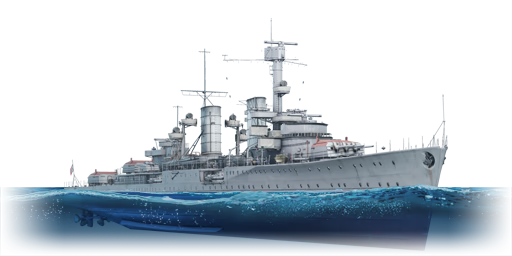

Bluewater Fleet
Köln
IV
Rank
AB
5.3
RB
5.3
Battle rating
Germany
Game nation
Light cruiser
Main role
46,000

Research
150,000

Purchase
General information
Specification
Armour
Citadel
70 / 50 / 20 mm
Main fire tower
30 / 20 / 20 mm
Hull
25 mm (steel)
Superstructure
8 mm (steel)
Number of sections
8
Displacement
8,130 t
Crew
820 persons
Max speed
Forward
60527052 km/h
Backward
22182518 km/h
Primary armament
3 × Turret — 3 × 15 cm/60 SK C/25 naval gun
Ammunition
1,080 rounds
Reload
basic crew → aces
9.8 → 7.5 s
Vertical guidance
-10 / 40°
Turret Rotation Speed
Horizontal
7.66.57.66.5 °/s
Vertical
86.886.8 °/s
| Ammunition | Type | Armor penetration (mm) at a distance: | |||||
|---|---|---|---|---|---|---|---|
| 1000 m | 2500 m | 5000 m | 7500 m | 10000 m | 15000 m | ||
| HE | 37 | 37 | 37 | 37 | 37 | 37 | |
| APCBC | 293 | 252 | 193 | 145 | 105 | 68 | |
| SAPBC | 116 | 99 | 74 | 55 | 40 | 35 | |
| HE-TF | 37 | 37 | 37 | 37 | 37 | 37 | |
Secondary armament
3 × Turret — 2 × 8.8 cm/76 SK C/32 anti-air cannon
Ammunition
2,400 rounds
Reload
basic crew → aces
3.9 → 3 s
Vertical guidance
-10 / 80°
Turret Rotation Speed
Horizontal
108.5108.5 °/s
Vertical
1210.21210.2 °/s
| Ammunition | Type | Armor penetration (mm) at a distance: | |||||
|---|---|---|---|---|---|---|---|
| 100 m | 1000 m | 2000 m | 3000 m | 4000 m | 5000 m | ||
| HE | 16 | 14 | 12 | 11 | 11 | 11 | |
| HE-TF | 16 | 14 | 12 | 11 | 11 | 11 | |
Anti-aircraft armament
4 × Turret — 2 × 3.7 cm SK C/30 mounting
Ammunition
16,000 rounds
Reload
basic crew → aces
2.6 → 2 s
Vertical guidance
-10 / 85°
Turret Rotation Speed
Horizontal
19.616.719.616.7 °/s
Vertical
1512.81512.8 °/s
| Ammunition | Type | Armor penetration (mm) at a distance: | |||||
|---|---|---|---|---|---|---|---|
| 10 m | 100 m | 500 m | 1000 m | 1500 m | 2000 m | ||
| HE | 7 | 7 | 6 | 5 | 5 | 5 | |
4 × Turret — 2 cm/65 C/30 automatic cannon
Ammunition
8,000 rounds
Belt capacity
20 rounds
Reload
basic crew → aces
5.2 → 4 s
Fire rate
276 shots/min
Vertical guidance
-10 / 65°
Turret Rotation Speed
Horizontal
6555.36555.3 °/s
Vertical
5546.85546.8 °/s
| Belt | Belt filling | Armor penetration (mm) at a distance: | |||||
|---|---|---|---|---|---|---|---|
| 10 m | 100 m | 500 m | 1000 m | 1500 m | 2000 m | ||
| AP-T/AP/HEF-T/HEF | 36 | 35 | 29 | 24 | 21 | 18 | |
Additional armament
Setup 1
12 × 533 mm G7a torpedo
Economy
Repair cost
Basic → Reference
AB
10,118 → 13,153 

RB
9,819 → 12,765 

Crew training
43,000 

Experts
150,000 

Aces
940 

Research Aces
480,000 

Reward multiplier
AB / RB
430 / 600 % 

166 % 

Total cost of modifications
44,800 

81,000 

Talisman cost
1,500 

Research order:
Seakeeping |
|---|
Unsinkability | |
|---|---|
Firepower | ||
|---|---|---|
Rating by players
You must play more than 3 battles for the last week and more than 10 battles in a vehicle to rate it.
Like:
9
Armor protection:
Not enough ratings
Survivability:
Not enough ratings
Mobility:
Not enough ratings
Armament:
Not enough ratings
Balance:
Not enough ratings
Tips & Tricks
This space is currently empty
Do you know any interesting vehicle features?
Loading...
No articles about this vehicle yet
Become the first author and get rewards!
Write a guide, tell about interesting historical facts, make a tutorial or simply an interesting post.
No more content